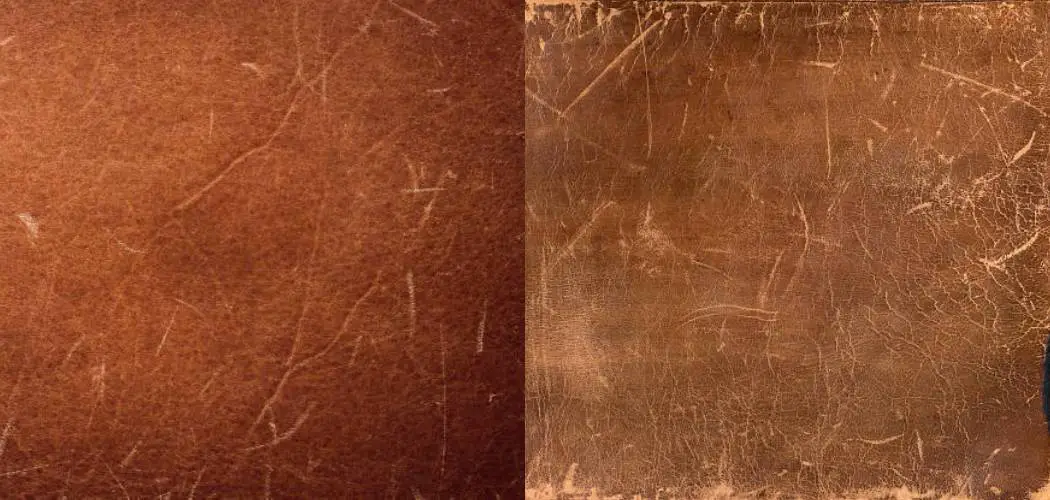Do you have scratched leather furniture or accessories? Don’t worry. You are not alone! Scratches are a common issue with leather, but luckily they can be treated and even sometimes completely repaired.
There are many ways to treat scratched leather, depending on the severity of the scratch. You can use a leather repair kit or a home remedy if the scratch is minor. You may need to take the leather to a professional for more serious scratches. No matter what treatment you choose, take care to avoid further damage to the leather.
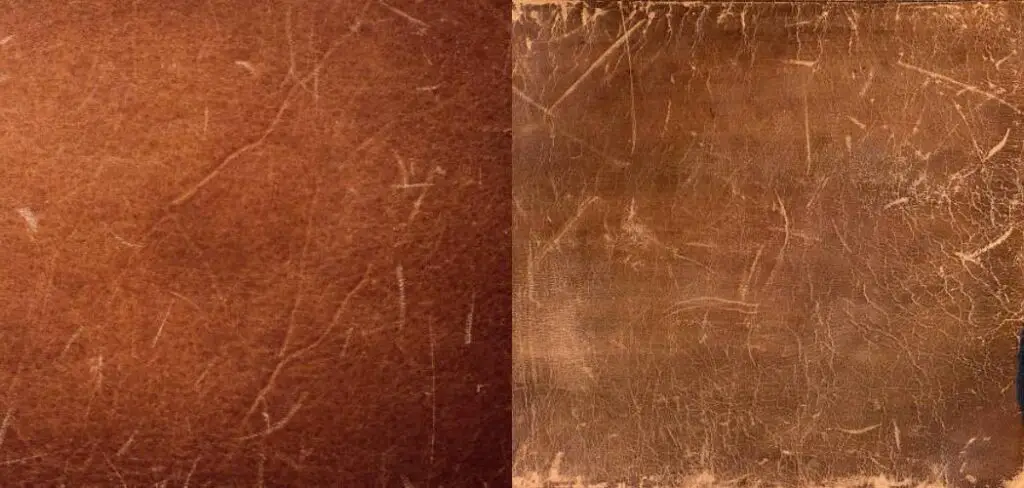
Leather is a durable and luxurious material, but it’s not invincible. Scratches can happen to even the most careful of people, and when they do, it’s important to know how to treat them correctly. In this post, we’ll show you how to treat scratched leather using some common household items. Keep reading for more information!
Can Scratch on Leather Fully Repairable?
Scratches on leather can often be repaired, but it depends on the severity of the scratch. Minor scratches can usually be treated with a leather repair kit or a home remedy, while deeper scratches may require professional intervention. In either case, it’s important to follow instructions carefully and avoid causing further damage to the leather.
What Are Some Common Household Items That Can Treat Scratched Leather?
- Petroleum jelly or mayonnaise can be used as a natural moisturizer for minor scratches on leather.
- For more serious scratches, rubbing alcohol or white vinegar mixed with water can help fill in and blend the scratch.
- A leather repair kit can also be used to treat scratched leather.
It’s important to test any household items on a small, inconspicuous area of the leather before applying it to the scratch.
10 Easy Steps on How to Treat Scratched Leather:
Step 1. Identify the Depth of The Scratch
Before starting any treatment, you need to determine the depth of the scratch. Gently run your finger over it. If you can feel a deep groove or indentation, the scratch may be too severe for at-home treatment and require professional intervention.
Step 2. Test Your Chosen Treatment on a Small Area
Using a soft cloth, gently wipe down the scratched area to remove any dirt or debris. Before applying anything to the scratched leather, test it on a small, inconspicuous area first to make sure it won’t cause any damage or discoloration. Be careful not to rub too hard, as this can also cause damage.
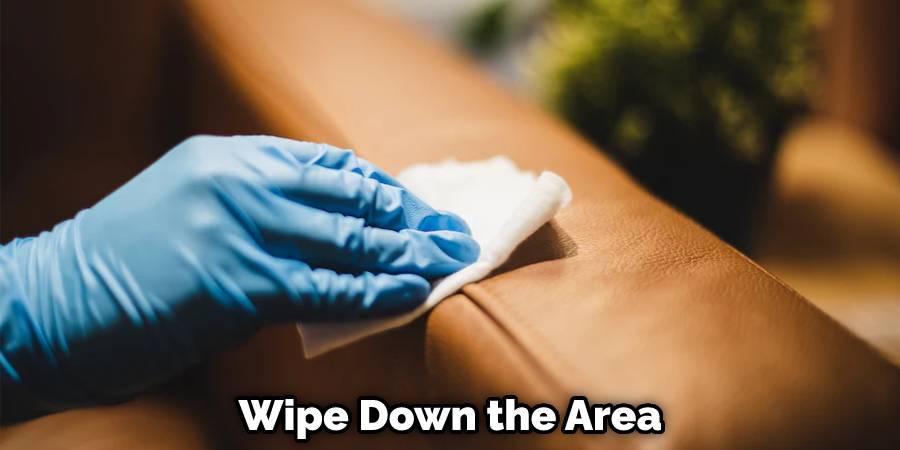
Step 4. Apply Your Chosen Treatment
If using petroleum jelly or mayonnaise, apply a small amount to the scratched area with a soft cloth and rub it in gently. Let sit for 10-15 minutes before wiping off any excess moisturizer with a clean, dry cloth.
If using rubbing alcohol or white vinegar, mix with water in equal parts and apply to the scratch with a cotton swab. Rub gently until the scratch is filled in and blended.
Follow the directions on your leather repair kit for proper application.
Step 5. Let Dry and Evaluate the Results
Allow the treated area to dry completely before evaluating the results. The scratch may not be completely invisible, but it should be less noticeable and blend in better with the surrounding leather. If the scratch is still noticeable, repeat steps 4 and 5 until it is sufficiently blended with the surrounding leather.
Step 6. Condition and Protect Leather
After treating the scratch, it’s important to condition and protects the leather to prevent future damage. Use a leather conditioning product according to package directions, especially to any treated areas. Finish by applying a waterproof protector to help repel water and dirt.
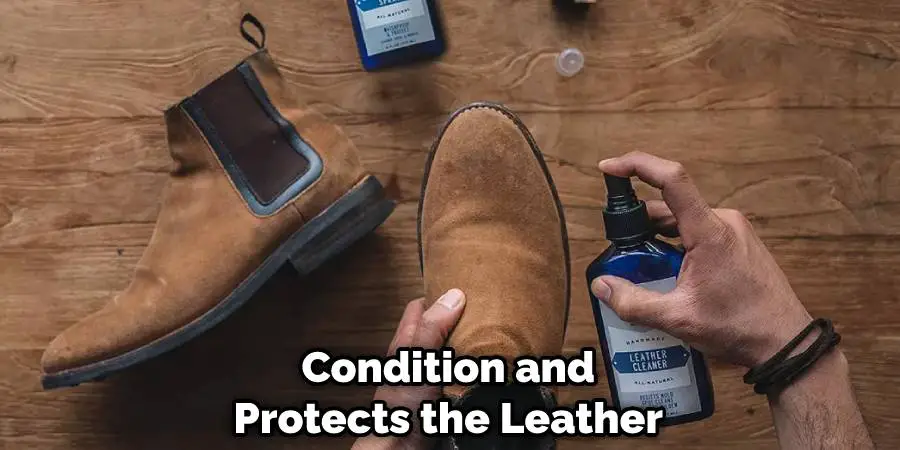
Step 7. Avoid Future Scratches
Take steps to avoid future scratches on your leather items by keeping them out of direct sunlight and away from sources of heat or sharp objects. Regularly clean and condition the leather to keep it in good shape. Don’t forget also regularly to check for and treat any scratches that may occur.
Step 8. Keep Repair Kit on Hand
Keep a leather repair kit on hand for any future scratches or damage. This will make it easier to treat problems as they arise and prevent further damage from occurring. You can also use the kit to touch up any areas that may have been affected by previous scratches.
Step 9. Store Leather Properly
Proper storage is important to prevent damage and keep leather in good shape. Store leather items away from direct sunlight and heat sources, and avoid keeping them in plastic bags or containers that don’t allow for proper air circulation.
Step 10. Be Patient
Treating scratched leather takes time and patience, so don’t expect immediate results. Keep working at it until you are satisfied with the outcome, or seek professional help if necessary. Your leather items will thank you for taking the time to care for them properly!
Now that you know how to treat your scratched leather, your beloved leather items will look good as new for years to come. Happy treating!
Also you Can Visit To How to Put Rivets on Leather
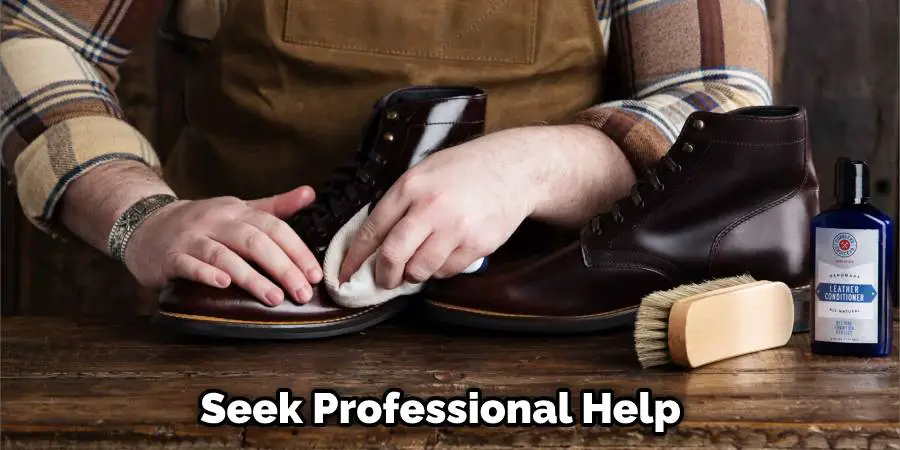
7 Additional Tips and Tricks:
- Use the edge of a walnut to fill in shallow scratches.
- Consider using shoe polish or leather dye to cover them for deeper scratches.
- Use a leather conditioner with SPF to protect against sun damage and fading.
- Keep your leather items away from pets’ claws to prevent scratching.
- When dealing with light colored leather, try using a white pencil eraser to buff out small surface scratches.
- Use warm (not hot) water and a soft cloth to clean the leather instead of harsh chemicals.
- Avoid using baby or mineral oil as a moisturizer, as they can cause discoloration. Stick with petroleum jelly or specialized leather conditioners.
These tips and tricks can help keep your leather items looking their best for a long time to come. Enjoy your well cared for leather goods!
7 Precautions to Take Before Treating a Scratched Leather Surface:
- Test the treatment solution on a small, inconspicuous area first to ensure it does not damage or discolor the leather.
- Clean the scratched area with a soft cloth and mild soap before applying any treatments.
- Use light pressure and gentle, circular motions when applying treatments.
- Allow plenty of time for the treatment to dry before using or touching the surface again.
- Re-condition and protect the leather after treating scratches to maintain its quality and longevity.
- Keep sharp objects away from the leather surface.
- Avoid placing heavy objects directly on the leather.
Taking these precautions can help ensure the successful and safe treatment of scratched leather surfaces. Remember to always refer to the manufacturer’s instructions for the best care of your leather items. Happy repairing!
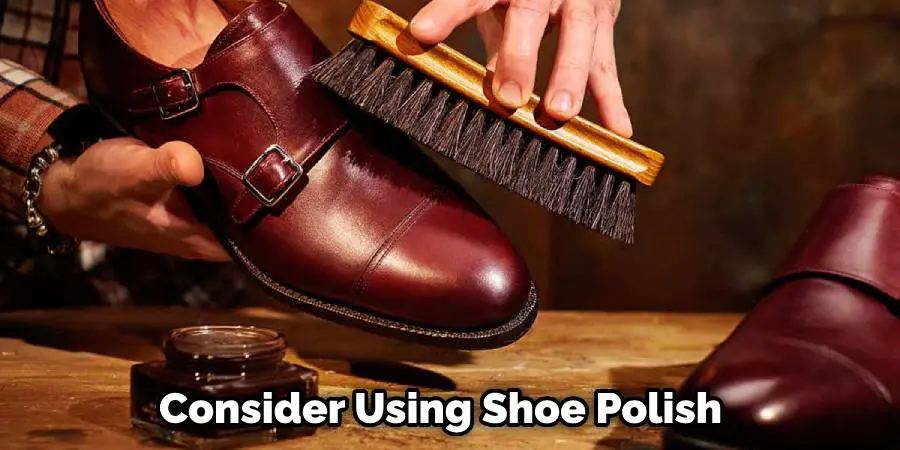
Different Home Remedy Items for Treating Scratches
- Coconut oil: Apply a small amount to the scratched area and rub in with a soft cloth. Let sit for 10-15 minutes before wiping off any excess.
- Lemon juice: Mix with equal parts water and apply to scratch with a cotton swab, rubbing gently until the scratch is filled in and blended.
- Vaseline: Apply a small amount of Vaseline onto the scratched area and rub it in with a soft cloth, then buff it to bring back the shine.
- Beeswax: Warm up beeswax and apply to scratches with a cotton swab, rubbing gently until the scratch is filled in and blended. Let dry completely before evaluating results.
Remember, always test these home remedies on a small, inconspicuous area first to ensure that they do not discolor or damage the leather.
What Are Some Signs That Professional Intervention is Needed for Scratched Leather?
- If the scratch goes all the way through the top layer of leather and exposes the underlying material, it may require professional treatment.
- Professional intervention may be necessary if home remedies or a repair kit do not fully blend or fix the scratch.
- It’s always best to consult a professional if you are unsure how to treat a scratch on your leather item properly.
As a final note, it’s important to take preventative measures to avoid scratches on your leather items. This can regularly include conditioning and protecting the leather, being careful with sharp objects around the leather, and avoiding placing the leather in direct sunlight.
Taking proper care of your leather items can reduce the likelihood of scratches and maintain their appearance for years to come.
Frequently Asked Questions
Does Olive Oil Remove Scratches Leather?
There is some evidence to suggest that olive oil can remove scratches from leather, but it is not a guaranteed solution. Additionally, there are other products that can be used to achieve the same objective. If you have a large scratch on your leather, it may be best to bring it in for repair or replacement.
How Do You Fix Scratches on a Leather Couch?
Scratches on a leather couch can be fixed with a variety of solutions, depending on the severity and location of the scratches. If the scratches are small and located close to the surface of the leather, a simple solution may be to use a cream or polish to restore the surface. If the scratches are more severe or located deeper within the leather, a more intensive solution may be necessary. In either case, it is important to avoid using harsh chemicals or solvents that could damage the surface of the couch. Instead, opt for products that are specifically designed for leather furniture, such as Armor All or Leather-X. Once the scratches have been repaired or restored, it is important to seal them in with a coat of wax or lacquer to protect them from moisture and sunlight.
What Oil is Good for Scratches on Leather?
The best oil for scratches on leather will depend on the type of leather and the severity of the scratch. However, some oils that are commonly used to treat scratches on leather include:
1. Petroleum jelly: Petroleum jelly is a thick, oily substance that can be used to heal minor cracks and scratches on leather. It is also effective at repelling water and other substances, making it a good choice for use on exterior surfaces that are exposed to rain or snow.
2. Mineral oil: Mineral oil is a lightweight oil that is often used as a moisturizer or skin care product. It has a high viscosity and can be used to help prevent scratches from spreading and to help fill in small cracks on leather surfaces.
3. Lanolin: Lanolin is a natural wax derived from sheep’s wool. It is often used as a base ingredient in many skin care products, including creams and lotions for treating scratches and dry skin. Lanolin is also effective at protecting leather from moisture damage and oxidation.
Can Oil Remove Scratches?
Yes, oil can remove scratches from hard surfaces. To use oil to remove scratches, apply a small amount to the scratched area and wait until the oil has absorbed into the scratch. Then, use a cloth or a piece of paper to rub the area until the scratch is completely gone. Be careful not to over-fry the scratch or you may end up with an even deeper mark.
Conclusion
Leather is a natural material that offers both beauty and durability, but it does require some care to keep it looking its best. Treating scratches on leather furniture is not impossible, but it does require taking the time to do it carefully and using the right products.
Although it may seem daunting, treating a scratched leather couch is not difficult and only requires a few household items. With a little patience, your couch will look as good as new.
All in all, it’s important to remember that leather is a delicate material. Knowing how to treat scratched leather on your leather product can help extend its lifespan and keep it looking luxurious for years to come. With these tips, you’ll be an expert in caring for leather in no time!

